Climate Change
The Shifting Planet
At the peak of the last ice age, the global temperature was only about 5°C colder than today. It doesn’t take much to change the world.
Global climate change has already impacted our environment and human populations. Glaciers have shrunk, plant and animal ranges have shifted, coastal communities have been destroyed and food sources have been depleted. At the peak of the last ice age, the global temperature was only about 5°C colder than today – the temperature does not have to shift greatly to make a devastating impact on our world.
Carbon dioxide’s long-lasting life in the atmosphere has locked us into global warming impacts for centuries – even if all emissions were halted immediately.[44. IPCC Fourth Assessment Report: Climate Change 2007. Synthesis Report. www.ipcc.ch] If we continue to produce carbon dioxide at the present rate, we can expect the atmosphere to be affected for 30,000 to 35,000 years.[45. Coral Reefs (2008) 27:459-472. “Mass extinctions and ocean acidi?cation: biological constraints on geological dilemmas.” J.E.N. Veron. http://link.springer.com]
Impacts that scientists had predicted are now occurring: air and temperature change, extreme weather, rising sea levels, loss of sea ice, damage to ecosystems, and now ocean acidification.
Climate Change: Increased Temperatures
If we continue to produce carbon dioxide at the present rate, we can expect the atmosphere to be affected for 30,000 to 35,000 years.[46. Vernon.] The Earth’s temperature has already risen 0.6°C and could warm by as much as 6.4°C by 2100 – but we don’t know what the full impact will be of warming temperatures.
We need to get our greenhouse gas emissions under control to limit the severity of climate change. With every year and every increase in carbon dioxide levels – we multiply the impacts and their duration of climate change.[47. National Research Council. “Climate Stabilization Targets.” www.scribd.com] Climate change will have a multitude of negative impacts to our oceans, to weather patterns, sea levels, glaciers and ecosystems.
Climate Change: Ocean Temperatures rise
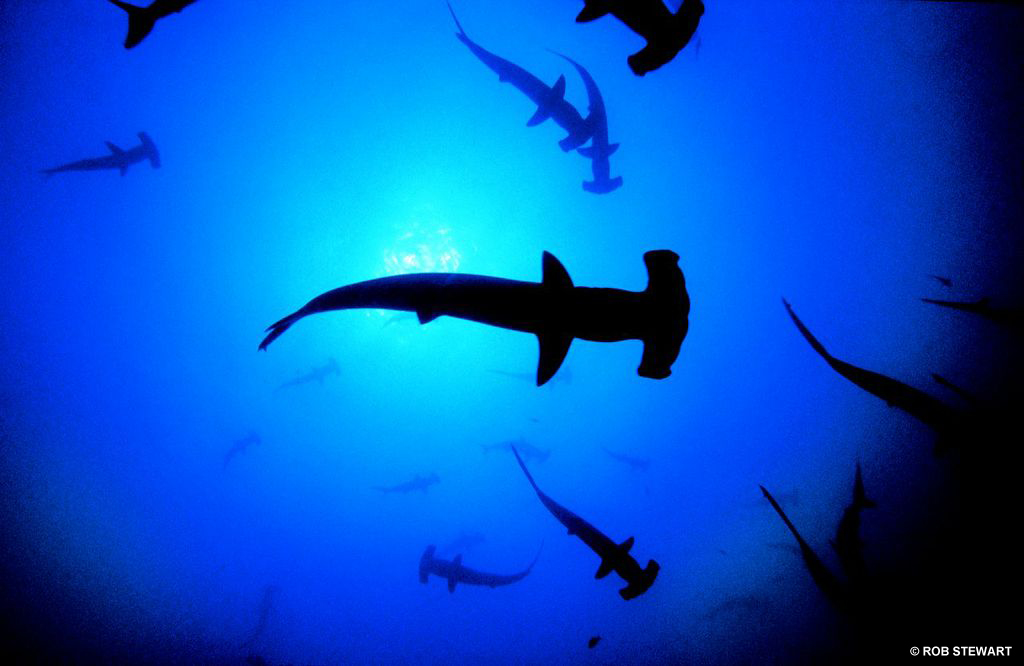
Hammerhead sharks – The ocean is getting more acidic as it removes excess carbon dioxide in the atmosphere.
The ocean is getting more acidic as it removes excess carbon dioxide in the atmosphere. The ocean is a vital part of our protection system against global warming, taking up more than 80 percent of the heat being added to the Earth. Learn more about the impacts and causes of ocean acidification. Click here to visit our Ocean Acidification page. Ocean temperatures have already increased in the upper several hundred metres of the ocean and are predicted to warm up to 3°C by 2100. Warmer oceans will impact sea life, weather, food webs and water systems.
Marine life has adapted to their ocean habitats current water temperature. As the ocean temperatures rise the habitat of wildlife, food sources, and other aquatic life-cycles and systems are all impacted. Ocean warming and climate change are to blame for phytoplankton declines of up to 40 percent in the last 50 years in 8 out of 10 ocean regions.[48. Dr. Boris Worm, marine research ecologist, Dalhousie University. Quote from Revolution. (Rob Stewart Productions, 2012).] If phytoplankton, the base of the food web, continues to die, all ocean life will starve.

Image of phytoplankton
Increased water temperatures mean species will be forced to migrate, it will affect the spawning and migration, growth and survival of most fish. Sea levels will rise which could impact the survival of coral reef, sea grasses and other habitat forming species. The ocean currents will shift, which will impact the reproduction and nutrients of many species. There are countless other impacts that climate change and rapidly rising temperatures will have on our oceans.
Climate Change: Rising Sea Levels
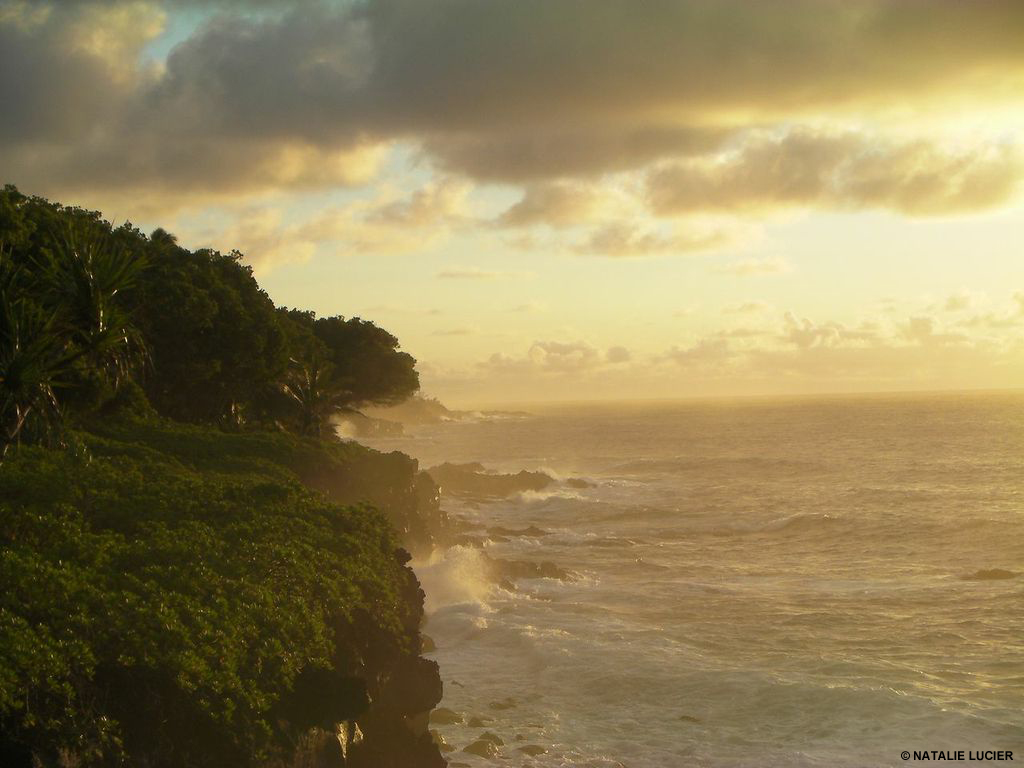
Hawaii coast, The Big Island – Sea level rise is caused by heat expansion of the oceans and the melting of glaciers, ice caps and polar ice sheets—all caused by global warming.
Climate change, the warming of the oceans and the melting of glaciers, ice caps and polar ice sheets all cause the sea levels to rise. Sea levels have already risen 15 to 20 centimetres in the last 100 years. Predicting future increases is difficult and scientists are hesitant to put an upper boundary on the predictions, with scenarios estimating sea levels rising another 20 centimetres to 60 centimetres or more by 2100.[49. IPCC Fourth Assessment Report: Climate Change 2007. Chapter 6. “Coastal systems and low-lying areas.” www.ipcc.ch]
Rising seas flood, erode and destroy human and wildlife habitat. We have already seen the effects of rising sea levels across the globe. Over half of the 4 billion people in Asia live near the coast, making them directly vulnerable to sea level rise.[50. Oxfam Australia. “Impacts of climate change.” www.oxfam.org] In coastal Louisiana, in the United States, the sea level has risen by 20 centimetres or more in the last 50 years.[51. United States Environmental Protection Agency. “Coastal Areas Impacts & Adaptation.” June 14, 2012. www.epa.gov]
In Bangladesh two-thirds of the country is above sea level and is experiencing coastal damage from cyclones and salt water moving inland.[52. World Bank. “Bangladesh and Maldives Respond to Climate Change Impacts.” Dec. 7, 2012. www.worldbank.org]
The people of the low-lying Pacific island nation of Kiribati fear that climate change could wipe out their entire archipelago (group of islands). They’re solution is to purchase land in nearby Fiji to relocate its entire population.
Climate Change: Melting Ice and Snow
Sea ice is one of the most productive ecosystems on earth.
The sea ice ecosystem provides food for fish, birds and mammals. Polar bears, seals, caribou, walruses, narwhal and bowhead whales are all mammals that rely on sea ice for food, breeding and movement.

Glacier shelf collapse – Glacier shelf collapse, Patagonia, Argentina
The Greenland ice sheet is one of two ice sheets in the world – it covers most of Greenland in ice two to three kilometres thick for the last 18 million years. The ice sheet contains a massive amount of fresh water – and in 2012, the amount of melting was the highest of any year to date.[53. National Snow & Ice Data Center. “Greenland Ice Sheet Today. An Intense Greenland Melt Season: 2012 in Review.” Feb. 5, 2013. http://nsidc.org] The melting of the Greenland ice sheet will impact the rate of global sea level rise.[54. National Snow & Ice Data Center. “Greenland Ice Sheet Today. An Intense Greenland Melt Season: 2012 in Review.” Feb. 5, 2013. http://nsidc.org] Currently, the Greenland ice sheet is losing more than 200 billion tonnes of glacial ice per year.[55. Science. “Experts Agree Global Warming is Melting the World Rapidly.” Richard A. Kerr. Nov. 30, 2012. www.sciencemag.org]
Floating over millions of square kilometers of ocean; sea ice forms and melts with the polar seasons and controls heat, moisture and salinity. In the Arctic, some sea ice persists year after year and regulates climate by reflecting sunlight back into space. Once the sea ice is lost, more sunlight is absorbed into the newly open ocean causing the ocean to warm. The arctic sea ice is already shrinking by 2.7 percent per decade. Some projections are claiming that arctic late-summer sea ice may disappear almost entirely by the late 21st century.[56. IPCC Fourth Assessment Report: Climate Change 2007. Synthesis Report. www.ipcc.ch] For every 1°C of warming we will lose 25 percent of September Arctic sea ice.[57. National Research Council. “Climate Stabilization Targets.” www.scribd.com]
Thinner sea ice, deeper thaws in permafrost regions, decreases in snow cover and sea ice area, shorter freezing seasons of lake and river ice, melting glaciers, thawing of permafrost and increases in soil temperatures – are all direct results of climate change.
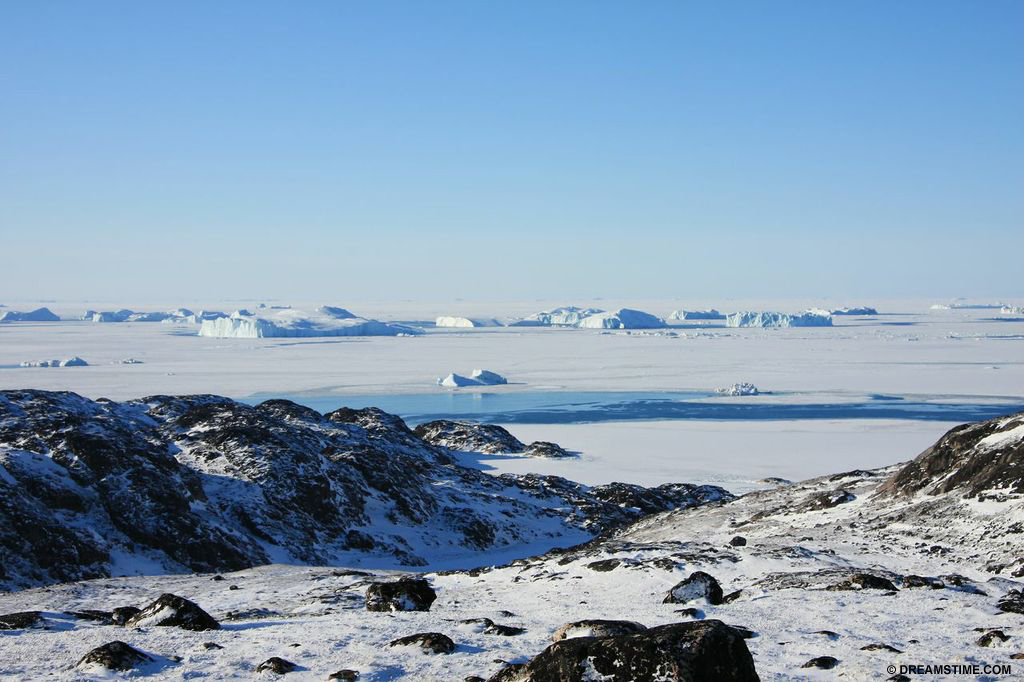
Greenland Ice-sheet – The Greenland ice sheet is one of two ice sheets in the world and covers most of Greenland in ice two to three kilometres thick
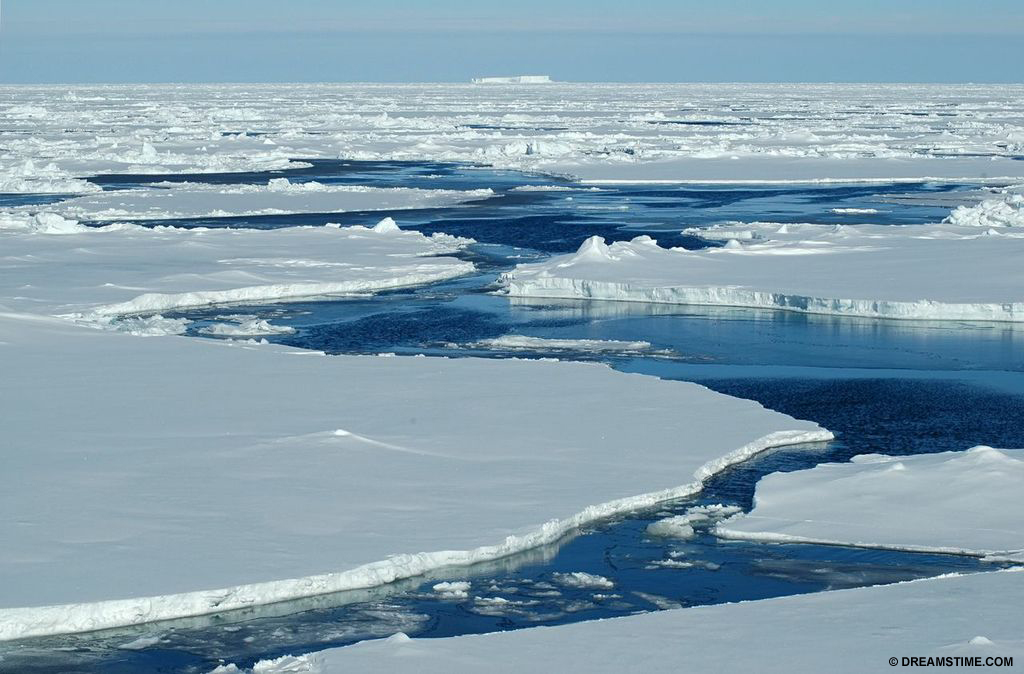
Sea Ice – Floating over millions of square kilometers of ocean, sea ice forms and melts with the polar seasons
Climate Change: Damaged Ecosystems
Scientists agree that if emissions continue to increase, ecosystems will not be able to adapt to the unprecedented combination of climate change stresses and other environmental issues.
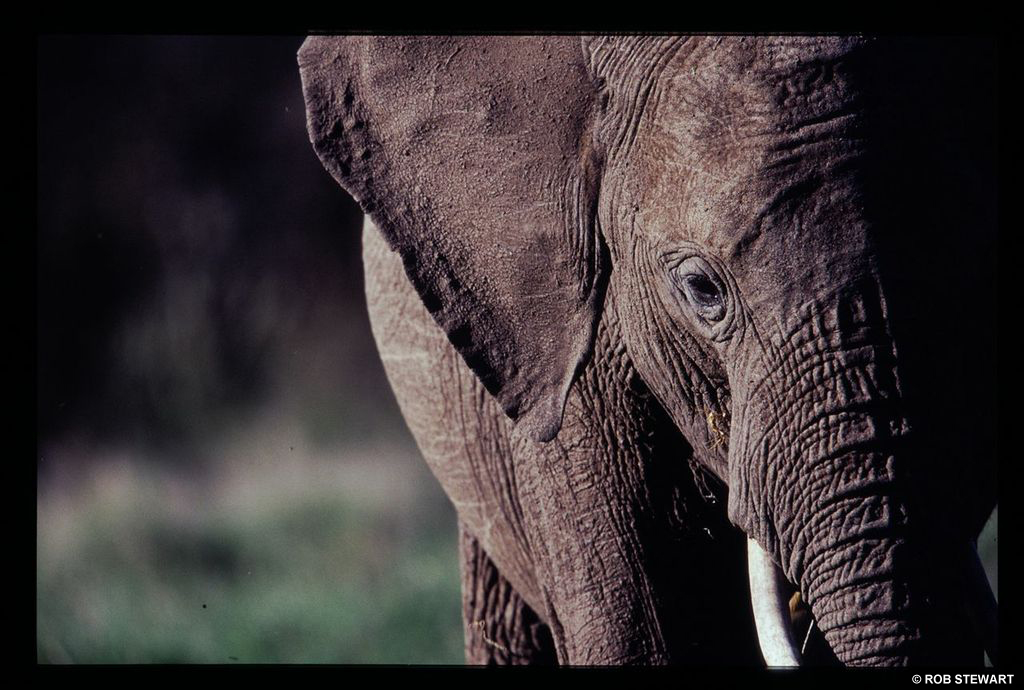
The elephant is one of the species at risk
The most vulnerable ecosystems to climate change are wetlands, coastal areas, tropical forests, coral reefs and sea ice. Increases in sea surface temperature of about 1 to 3°C are projected to result in more frequent coral bleaching events and widespread coral death. Cold-water corals are likely to shrink their range before 2100.[58. IPCC Fourth Assessment Report: Climate Change 2007. Chapter 4. “Ecosystem, their properties, goods, and services.” www.ipcc.ch]
When climate change alters when food is available to animals, it leads to impacts on reproduction, growth and general survival. Approximately 20 to 30 percent of plant and animal species are likely to be at high risk of extinction as temperatures warm more than 2 to 3°C.[59. IPCC Fourth Assessment Report: Climate Change 2007. Chapter 4. “Ecosystem, their properties, goods, and services.” www.ipcc.ch]
Dutch populations of the pied flycatcher have declined by about 90 percent over the past two decades in areas where food for the baby birds peaks too early in the season due to climate change.
Many aspects of species’ life-cycles are triggered by changes in their environment such as seasonal temperatures, sunlight levels (photoperiod) and location of stars. Climate change has already affected; the timing of plant growth, spawning dates in frogs and toads, return dates of migrant birds and butterflies, egg hatching dates in insects and laying dates in birds. To adapt to climate change, wildlife need to be able to move to suitable habitat, have a physical or behavioural characteristic that helps them survive, or change genetically.[60. Proceedings of the Royal Society of Biological Science. 275(1635):649-659. “Keeping up with a warming world; assessing the rate of adaptation to climate change.” Marcel E Visser. March 22, 2008. www.ncbi.nlm.nih.gov] How will plants and animals adapt fast enough to our rapidly shifting earth?
Climate Change: Impact on Humans
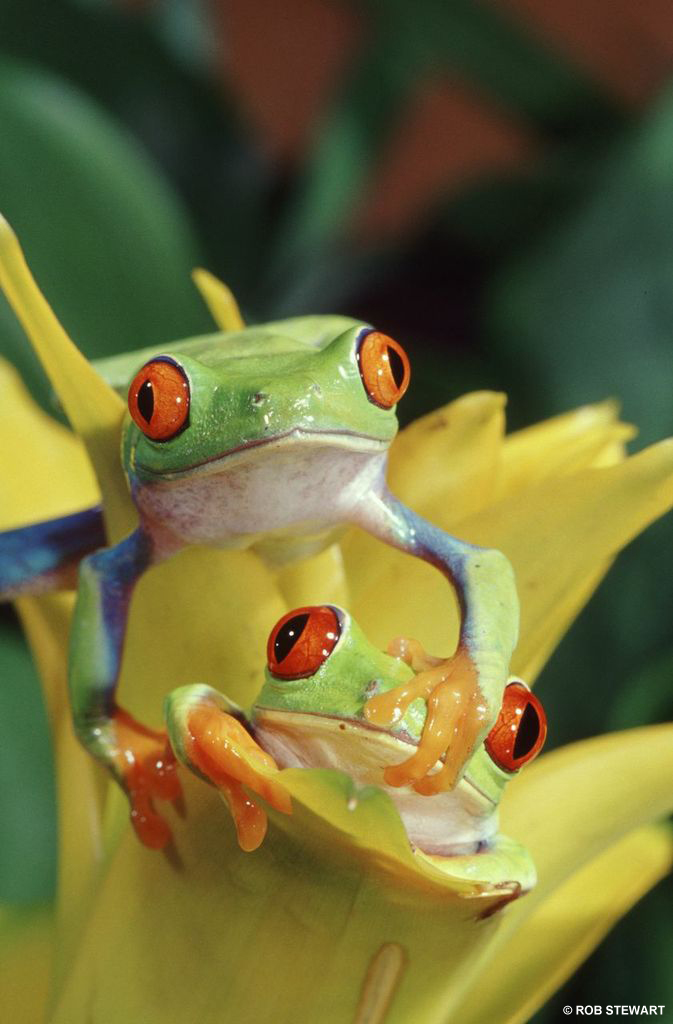
Many aspects of species’ life-cycles are triggered by changes in their environment such as the spawning dates in frogs and toads
Climate change impacts our health, water and food supplies, livelihood and shelter through weather changes and environmental and ecosystem shifts.
Increased frequency of heat stress, droughts and flooding along with fires, pests and disease will have significant impacts on agriculture (crops and livestock), forestry, and food insecurity – which will increase hunger in some of the poorest countries of the world.[61. Oxfam Australia. “Impacts of climate change.” www.oxfam.org]
Climate change will displace many in low-lying coastal urban areas – South, South East and East Asia, Africa and small islands are the most vulnerable.[62. IPCC Fourth Assessment Report: Climate Change 2007. Chapter 6. “Coastal systems and low-lying areas.” www.ipcc.ch] There are an estimated 26 million climate refugees, yet by 2050, 200 million people a year will be on the move due to hunger, environmental degradation and loss of land due to climate change.[63. Oxfam Australia. “Impacts of climate change.” www.oxfam.org] And coastal populations are expected to grow to more than 5 billion by 2080.
None of us are immune to the impacts of climate change: changes in temperature, precipitation and storms, the rising of sea level, melting glaciers, shifting ecosystems, and the depletion of agriculture, and forestry. There are immeasurable ways the shifts to our planet and environment are affecting our daily lives – that is why we must look beyond instant gratification towards the long-term preservation of planet earth.

Hiking in Newfoundland, Canada

Hurricane Katrina, New Orleans.
Climate Change: Extreme Weather
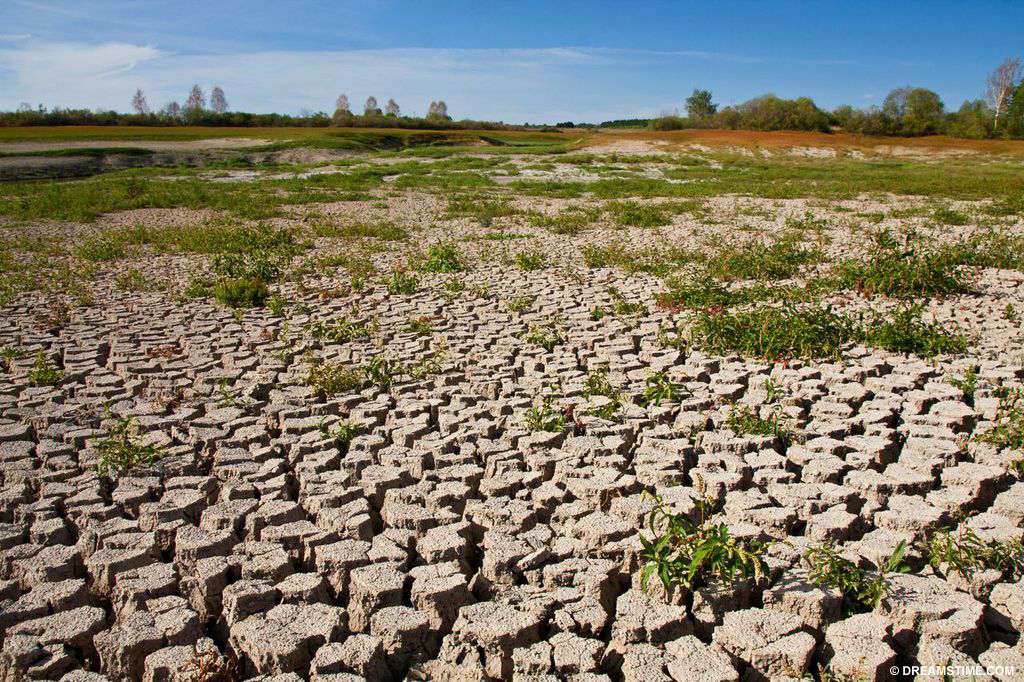
Drought stricken soil
The most noticeable impact of climate change on people worldwide has been extreme weather—such as floods, drought, heat stress and intense storms. Extreme weather is wreaking havoc across the globe, giving monsoon soaked countries a double wallop and hitting areas least expected like Britain and New York.
If our current rates of climate change continue we can expect more temperature extremes, heat waves, increased intensity of heavy rain and snow falls, changes in amount of rain and snow per year, changes in wind and temperature patterns, increased intensity of tropical storms and extreme storms moving towards the poles.[64. IPCC Fourth Assessment Report: Climate Change 2007. Synthesis Report. www.ipcc.ch]
Temperature records were broken in a number of countries in summer 2003 when Europe experienced its hottest heat wave in 500 years, more than 52,000 people died.[65. Earth Policy Institute. “Setting the Record Straight: More than 52,000 Europeans Died from Heat in Summer 2003.” Janet Larsen. July 28, 2006. www.earth-policy.org] As climate change ramps up the number of people suffering from death, disease and injury from acts of extreme weather will increase.[66. IPCC Fourth Assessment Report: Climate Change 2007. Chapter 8. “Human health.” www.ipcc.ch]

From space, the eye of a huge hurricane
December 2011 saw the end of a five-month flood in Thailand that hit 65 of 77 provinces. It was the worst flooding Thailand has experienced in 60 years –The floods killed more than 500 people and 12 million were affected.
[67. The Asia Foundation. “Flooding in Asia’s Megacities.” Kourtnii Brown. Jan. 4, 2012. www.asiafoundation.org]The World Bank estimated losses at 45.7 billion US dollars – the flood of Thailand was one of the top five most expensive natural disasters in history.
According to the World Bank, global warming could reduce agricultural productivity in Southeast Asia by 10 to 50 percent in the next 30 years. Rising sea levels have increased the salinity of the Mekong Delta, where the Mekong River empties into the South China Sea. Other rice-growing soils around major rivers in Asia will be hit with the same salinity issues as sea levels rise.[68. National Geographic Daily News. “Scientists Race to Save World’s Rice Bowl from Climate Change.” Ker Than. May 2, 2012. http://news.nationalgeographic.com] Asia will be home to at least 10 megacities (cities with populations over 10 million), many of which are located in tropical areas or floodplains, where rainfall intensity and temperature are likely to increase the most.[69. The Asia Foundation. “Flooding in Asia’s Megacities.” Kourtnii Brown. Jan. 4, 2012. www.asiafoundation.org]

Floods in Thailand had huge economic and environmental damage
Seasonal monsoon rains and a tropical storm – in the Philippines during August of 2012, fuelled widespread flooding and landslides. The flooding forced more than 780,000 people across the country from their homes, 242,000 fled to emergency shelters. In 46 communities, including Manila, the water level was waist high or deeper. Tropical Storm Washi left more than 1,200 people dead in the southern Philippines after flash floods swept away entire villages.
Pakistan has suffered devastating floods over the past two years. In 2010, floods affected more than 21 million Pakistani people – and there were 1,800 deaths. In September 2012, monsoon floods killed more than 400 people and affected more than 4.5 million others, in a two-week deluge of rain.
In 2012, Britain suffered a record-breaking drought, then got hit with some of the worst flooding in their history. In early 2012 rivers, reservoirs and aquifers were devastatingly low. Droughts such as this are expected every 50 years in Britain, but experts now say to expect them to reoccur every 10 years. When the rain did finally come – it lasted months and more than 8,000 homes were flooded.

Landslide buries a home
Superstorm Sandy wreaked havoc, In October 2012, on the Caribbean and the United States’ East Coast killing 71 people in the Caribbean and 146 in the United States. New York and New Jersey were the hardest hit with more than one million homes and businesses damaged; damage estimates are around $62 billion—the second-costliest storm in U.S. history. Cuba was hit even harder with up to 200,000 homes damaged, contributing to a Caribbean total of $315 million in damage. The US Federal Emergency Management Agency is already changing flood maps to reflect the storm and new climate change estimates tied to rising sea levels and storm increases.
Around the world, governments are seeking money, technology and emergency plans to help head off future disasters – as climate scientists continue to predict rising sea levels and the potential for more extraordinary storms. Costs from these storms are as extreme as the storms themselves. We must pressure our governments to direct funds on reducing climate change – or it is only going to get worse.
Climate Change: Our Future
We can look to places on the planet that have already been hit by extreme weather conditions to know what our future will hold if we do not halt climate change.
Arctic: Most Extreme Weather on Earth
 A recent study of climate change on Arctic marine mammals found that narwhal and walrus are among the most vulnerable.[70. The PEW Charitable Trusts. Oceans North. “Climate Change.” www.oceansnorth.org] The Arctic has been one of the first places on Earth with notable climate change effects. Climate change in the Arctic is expected to be the greatest of anywhere on Earth. The Arctic is a vast ocean surrounded by land with snow and ice, tundra and boreal forest. Here, people and wildlife have adapted to some of the most extreme conditions on Earth.
A recent study of climate change on Arctic marine mammals found that narwhal and walrus are among the most vulnerable.[70. The PEW Charitable Trusts. Oceans North. “Climate Change.” www.oceansnorth.org] The Arctic has been one of the first places on Earth with notable climate change effects. Climate change in the Arctic is expected to be the greatest of anywhere on Earth. The Arctic is a vast ocean surrounded by land with snow and ice, tundra and boreal forest. Here, people and wildlife have adapted to some of the most extreme conditions on Earth.
Temperatures are expected to go up 4 to 7°C over the next 100 years, yet in Alaska and Western Canada winter temperatures have already risen 3 to 4°C in the past 50 years’ – Denali National Park, Alaska USA.
[74. IPCC Fourth Assessment Report: Climate Change 2007. Chapter 15. “Polar Regions.” www.ipcc.ch]Arctic lifestyles have been hard hit due to shorter ice and snow seasons that impact fishing, hunting and related livelihoods. Temperatures in the Arctic are rising at twice the rate of the rest of the world – and are expected to rise 4 to 7°C over the next 100 years. The Arctic is expected to experience higher year-round temperatures, more winter precipitation and more extreme weather.[71. Government of Yukon. Environment Yukon. “Impacts of Climate Change.” Feb. 26, 2013. www.env.gov.yk.ca] The Arctic is home to four million people, 10 percent are indigenous.

Denali National Park, Alaska USA
Sea ice is home to much arctic wildlife. Summer sea ice has melted creating a loss of 15 to 20 percent in the last 30 years. Rate of ice melt is expected to speed up to dramatic losses of up to 50 percent of annual sea ice by 2100.[72. Polar Bears International. “IUCN study predicts dramatic decline in polar bear populations.” Oct. 20, 2011. www.polarbearsinternational.org] As sea ice retreats, the ivory gulls must fly further to obtain food. The bird populations, in Canada, have decreased by as much as 90 percent over the last 20 years.[73. World Wildlife Fund US. “Fact Sheet. Effects of climate change on arctic migratory birds.” www.worldwildlife.org]
Polar bears need sea ice to hunt for food. In areas where the sea ice melts completely each summer, polar bears are forced to spend several months on land surviving on stored fat reserves. In the Hudson each year there is less sea ice around for a shorter amount of time. Arctic habitats will be shifting in size and location due to rising seas – the southern habitats will be moving north (e.g., boreal forest) but northern habitats will have nowhere to go but disappear. Losses of tundra habitats of more than 50 percent could happen by 2100 – and stopover sites for migratory birds along the coast could be lost.

Polar Bear – Canada is home to 60 percent of the world polar bear population.
Frozen soil, or permafrost, has warmed up 2°C and the depth of the thaw is increasing. Northern peoples rely on frozen ground and ice roads for transport of goods and buildings. Melting permafrost turns land into inaccessible areas.
We can no longer be reckless with the one earth we have. Now that you are informed what action will you take? Learn more about how all the world governments can work together to put a stop to global warming and climate change – our survival depends on real change.

